Growing magnolia star-shaped, planting and care rules
Magnolia is usually associated with the subtropics, and not all gardeners of temperate latitudes know that it is possible to grow a beautiful tree with delicate fragrant flowers in the Middle Belt, and in the Urals, and in Siberia. An example of this is the stellate magnolia: its planting does not cause difficulties, it is unpretentious in care. Exact adherence to the rules of agricultural technology guarantees the abundant flowering of the exotic beauty.
Varieties
Of all frost-resistant species of magnolia, the star-shaped one is the smallest, its height rarely exceeds 3 m (in the south - up to 5 m), a compact bush forms a ball. Flowering begins in April, before the leaves appear. The flowers are large with narrow, star-shaped petals.
The following varieties are valued by gardeners.
- Royal Starthat can withstand temperatures up to -30 ° С. The height of the bush is about 3 m, the flowers are snow-white with 18-25 petals arranged in two rows, fragrant.
- Rosea - 2-meter shrub, slightly inferior to Royal Star in frost resistance. The color of the flowers is pale pink, the number of petals is 10-20.
- Dr. Massey - a variety perfectly adapted for the middle lane. The height of the bush is about 2.5 m, the buds are white-pink, the opened semi-double flowers are snow-white.
- Jane platt - the most decorative variety. Double pink flowers with a diameter of 20 cm have an exquisite aroma. Winter hardiness indicators are good.
Seat selection
Choosing the right place to plant completely determines the success of growing magnolia.
The main requirements for the location of the plant are as follows.
- Protection from wind and drafts, especially in the early years.
- Good lighting throughout the day. The southern or southeastern parts of the garden are optimal, but it is important to consider that excess sunlight stimulates the plant to open early leaf buds to the detriment of flowering. Experts recommend using existing plantings of tall trees - magnolia will feel great in their light midday shade.
The neighborhood with large trees is especially important for regions with a continental climate: the shade will delay flowering a little, which will protect the delicate buds from spring frosts (the magnolia itself is not afraid of frosts).
The beauty of magnolia has certain requirements for the soil:
- fertility;
- lightness, looseness;
- lack of stagnation of melt and rain water, deep groundwater;
- slightly acidic or neutral reaction (in its natural form, star magnolia grows in swamps).
Landing
The most practical method for planting magnolias is with a nursery-purchased seedling or grown from a cuttings or cuttings. Growing from seeds is of interest to professionals - the process is laborious, the first flowers on a tree will appear only after 10 years.
Seedlings are chosen according to the following criteria:
- height - about 1 m;
- placed in a container or there is an earthen lump;
- lack of foliage.
The optimal planting time is autumn, and not at all because autumn seedlings are sold at a lower price. During spring transplanting, container seedlings throw out a large number of shoots that do not have time to ripen and woody before the onset of cold weather. In the fall, the seedlings go on sale ready for winter.
The size of the planting hole should be 2 or 3 times the volume of the container or earthen ball. The excavated soil is used as a basis for the preparation of soil mixture, rotted compost and peat (2: 1: 1) are added to it, if necessary - a little sand.
The thickness of the drainage layer, laid out on the bottom of the pit, is not less than 20 cm. For drainage, take broken brick, expanded clay or crushed stone, pebbles of unknown rocks.
A 15-centimeter layer of river sand is poured over the drainage, and a layer of prepared soil mixture is placed on it.
Transfer from the container is carried out by the transfer method. The seedling is placed in the center of the planting pit, the roots are carefully spread. The root collar should be 3-5 cm above ground level.
The pit is filled with soil mixture. They are rammed very carefully, not hard, so as not to damage the delicate roots.
After planting, the plant is watered abundantly. When all the moisture is absorbed, the trunk circle is mulched with peat. Lay out a layer of coniferous bark on top. A double layer of mulch will retain moisture in the soil, impede the germination of weeds, and maintain the required level of acidity.
Care rules
Abundant flowering and frost resistance of magnolia fully depend on the correct care - watering, top dressing and other activities.
Watering is needed frequent and abundant (especially for young shrubs). In hot weather, carefully monitor the moisture content of the soil, preventing it from drying out.
Top dressing will be needed from 3 years of age. They are brought in from early spring to mid-August.
The optimal composition of feeding for 10 liters of water:
- ammonium nitrate - 20 g;
- urea - 15 g;
- mullein - 1 kg.
Each tree requires 40 liters of liquid feeding.
You can use ready-made fertilizers like "Kemira-Universal" (1 tablespoon per 10 liters of water) or special formulations for magnolias.
Magnolia does not tolerate an overdose of fertilizers, reacting to their excess by drying the leaves. If this happens, the situation is corrected by abundant watering every week.
Nitrogen-containing dressings are removed from the "diet" from the second half of July.
In case of insufficiently acidic soil, weekly feeding with iron chelates is recommended. For feeding, formulations are selected containing substances that increase the acidity of the soil.
Soil cultivation in near-trunk soil is carried out only when urgently needed. Weeds are removed by hand so as not to damage the delicate roots located at the very surface of the earth. The looseness of the soil is maintained by maintaining the integrity of the mulch layer, by regularly updating it.
Formative magnolia pruning is not necessary in most cases. But the healthy state of the tree is maintained by the timely removal of dried and broken off shoots throughout the season. In the spring, the frozen twigs are necessarily cut out, the cuts are covered with garden pitch.
Full shelter for the winter is required for young bushes. To do this, use burlap or agorofibre, folded in two layers. The tree is carefully wrapped in a cloth, trying not to damage the brittle twigs.
Both young and adult plants require insulation of the root area. In late autumn, it is covered with a thick (up to 30 cm) layer of mulch. The purpose of the shelter is not so much to protect the magnolia from the cold, but to prevent the early formation of flower buds during thaws, followed by return frosts.
Magnolia is not susceptible to disease. From pests in dry hot weather, it can become an object of attack by a spider mite. In this case, industrial insecticides are used ("Aktellik", "Fitoverm", "Agravertin") or folk remedies are used.
The best remedy for spider mites is keeping to the humidity regime.
Most often magnolias suffer from rodents, leaving damage in the area of the root collar. Moles break through passages under the roots, harming them. It is necessary to use deterrent methods. Damaged places on the trunk are treated with a 1% solution of Fundazol.
Similar species
The described rules for growing star magnolia are fully applicable in relation to other frost-resistant species.
- Magnolia Siebold tolerates frosts down to -36 ° C, blooms in early summer with white goblet flowers. It perfectly shows its decorative qualities both in damp Saint Petersburg and in the Far East.
- Magnolia Sulange is a hybrid shrub obtained from m. Nude and m. Lily.The goblet flowers bloom up to 25 cm in diameter, the color depends on the variety - from pale pink to rich terracotta. It is grown practically throughout Russia.
- Magnolia Cobus is the fastest growing species. Milky white fragrant flowers up to 10 cm in size open in early spring. It differs from its sisters in its tolerance to urban gas pollution.
Growing magnolia star-shaped is an easy process. Planting and grooming rules are clear and easy to follow. The reward for your efforts is a magnificent flowering at a time when the garden is still not fully awake after hibernation.
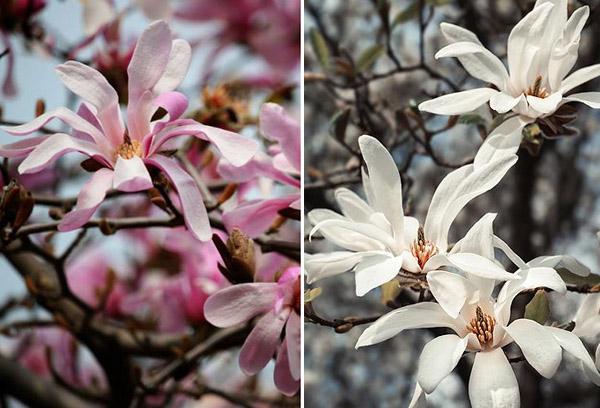
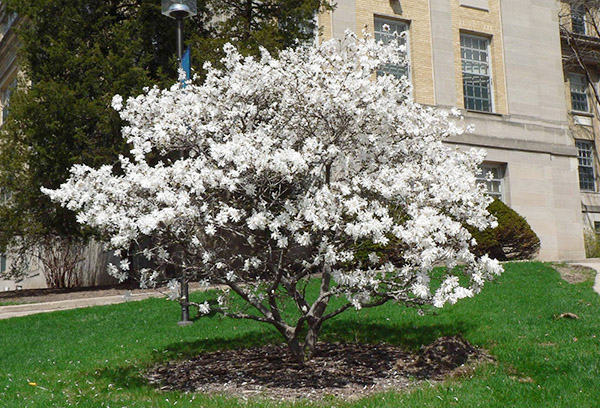
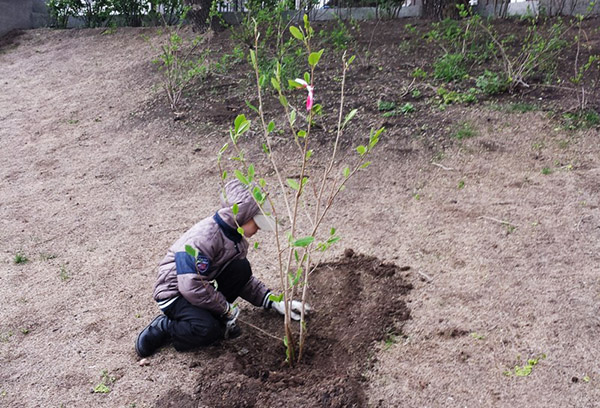

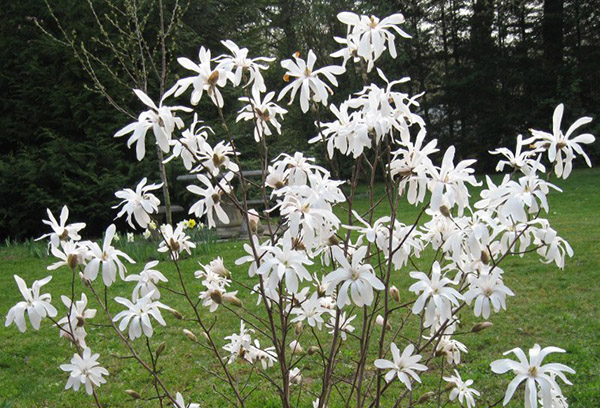
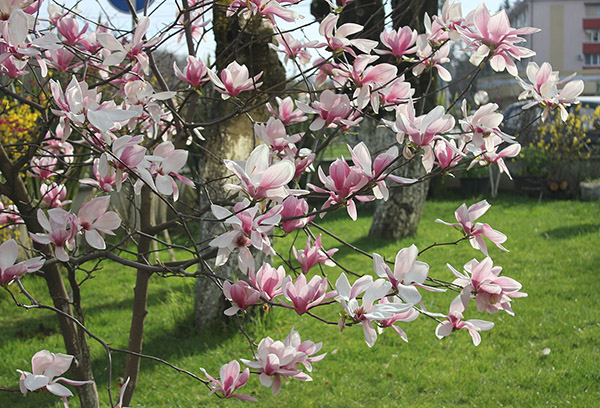
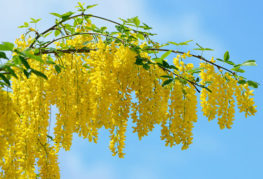
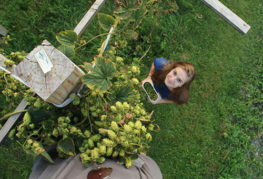
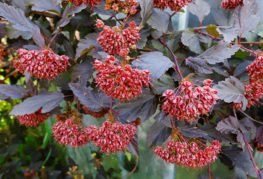
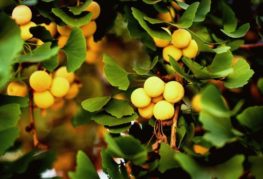
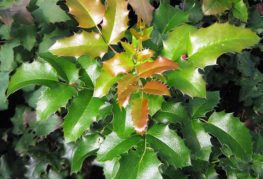
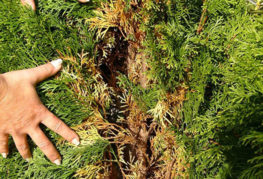
and will be published shortly.